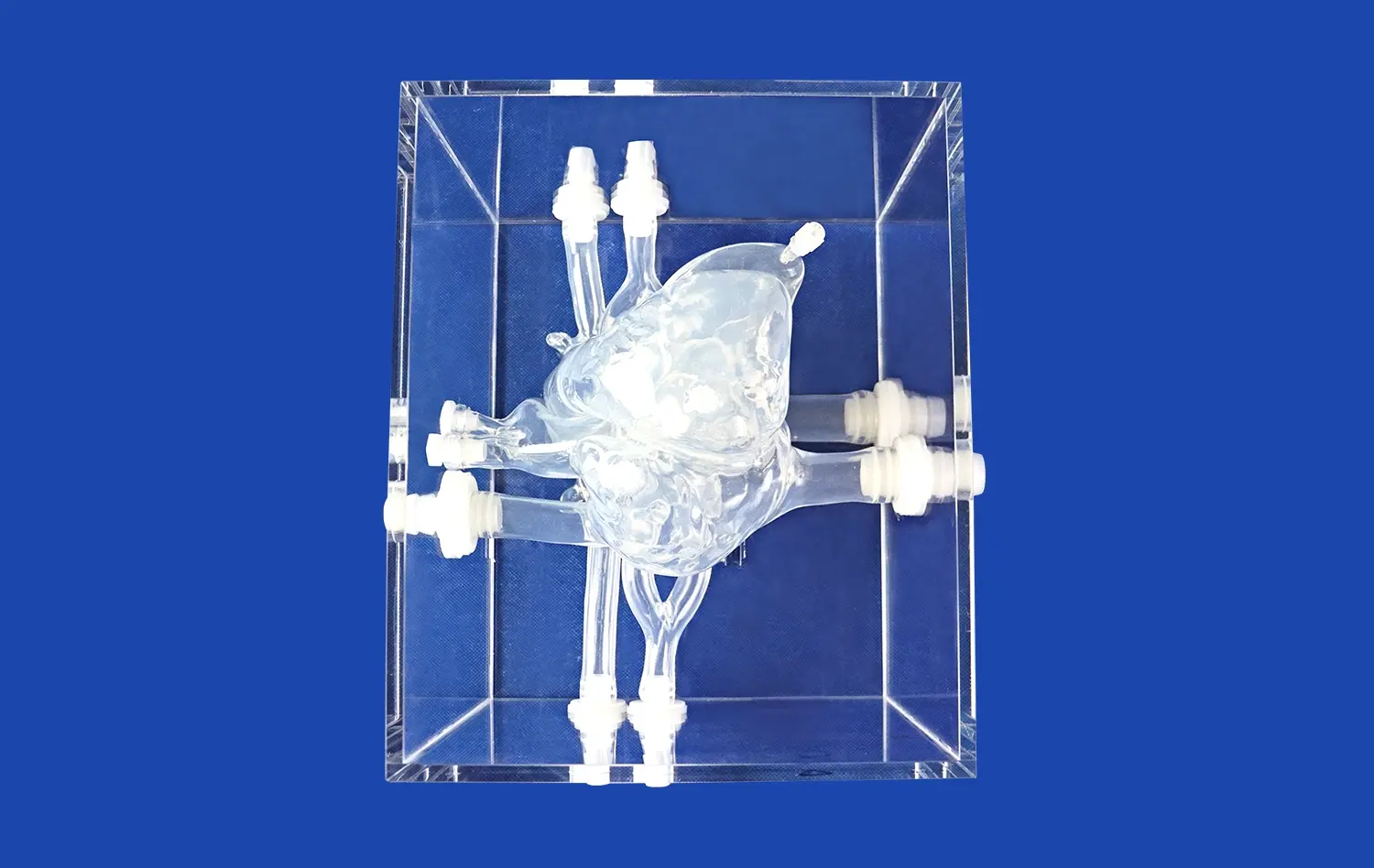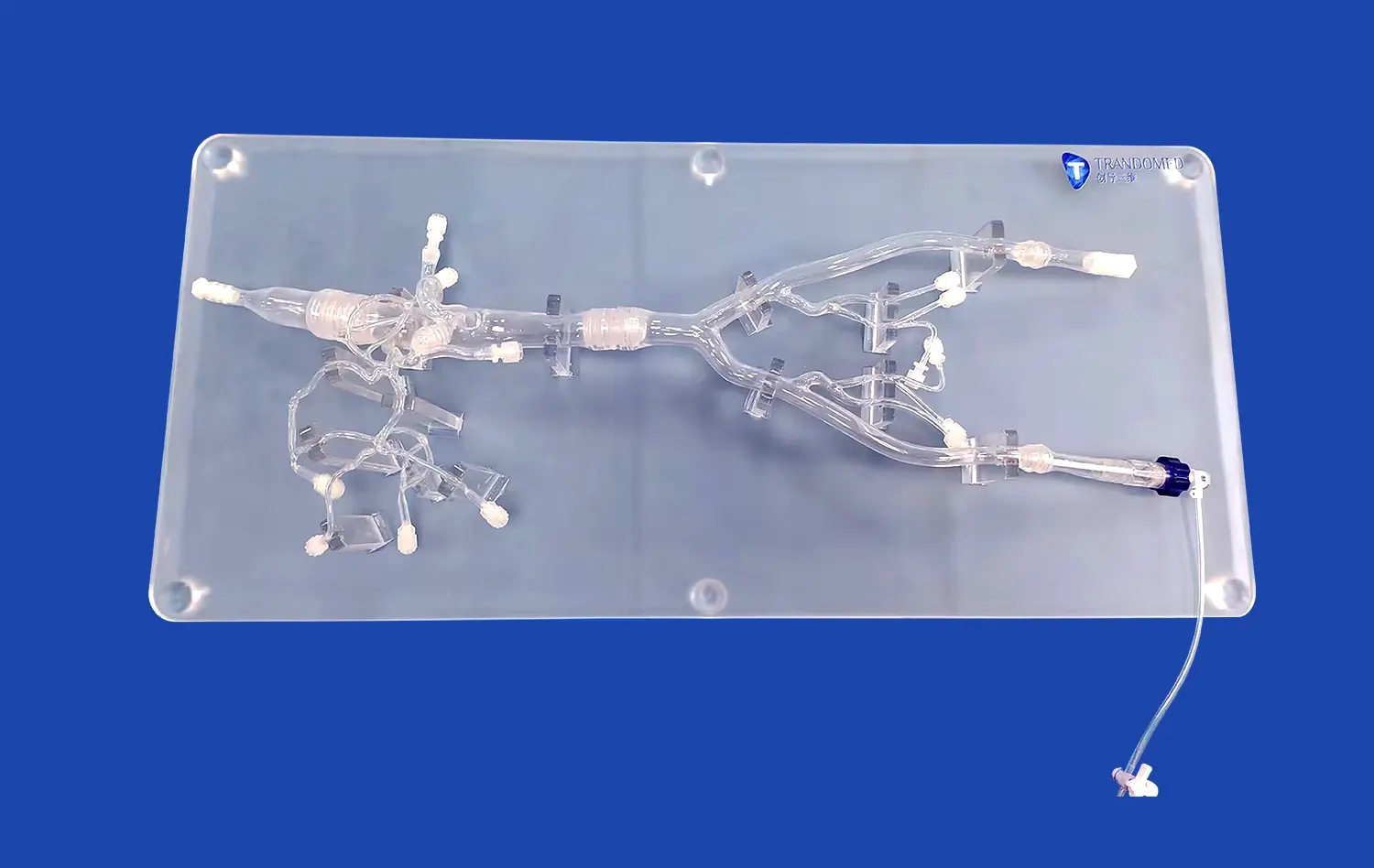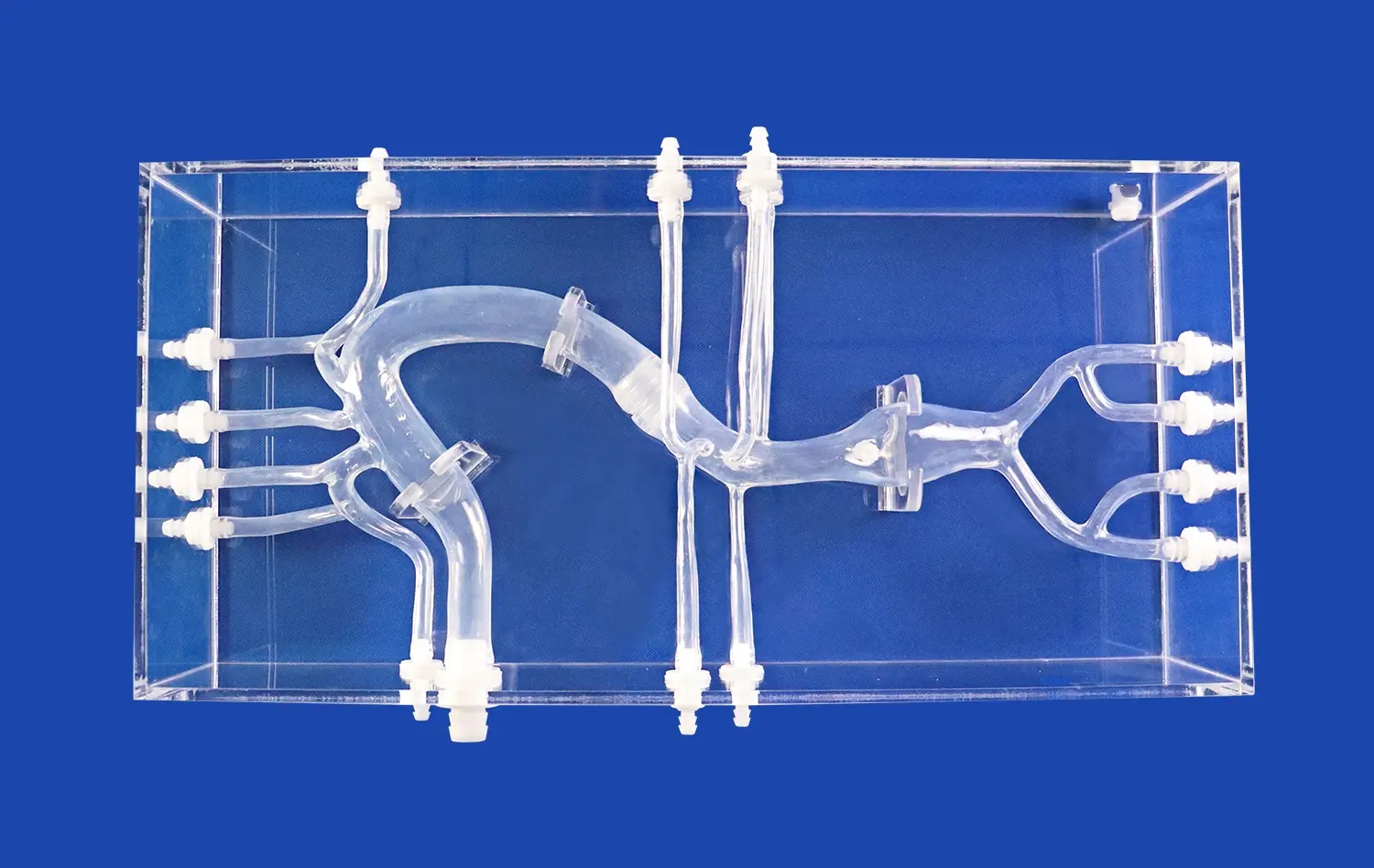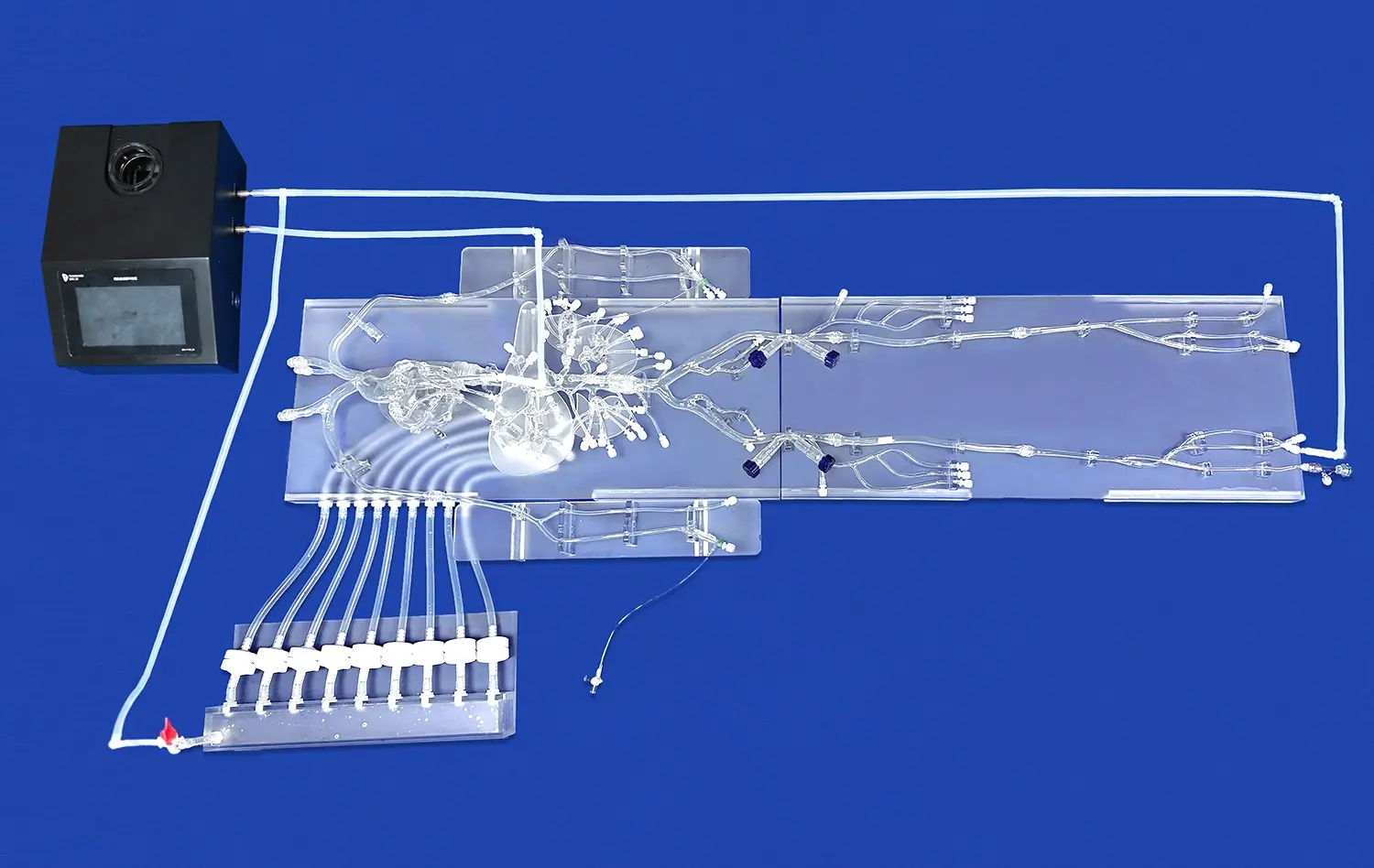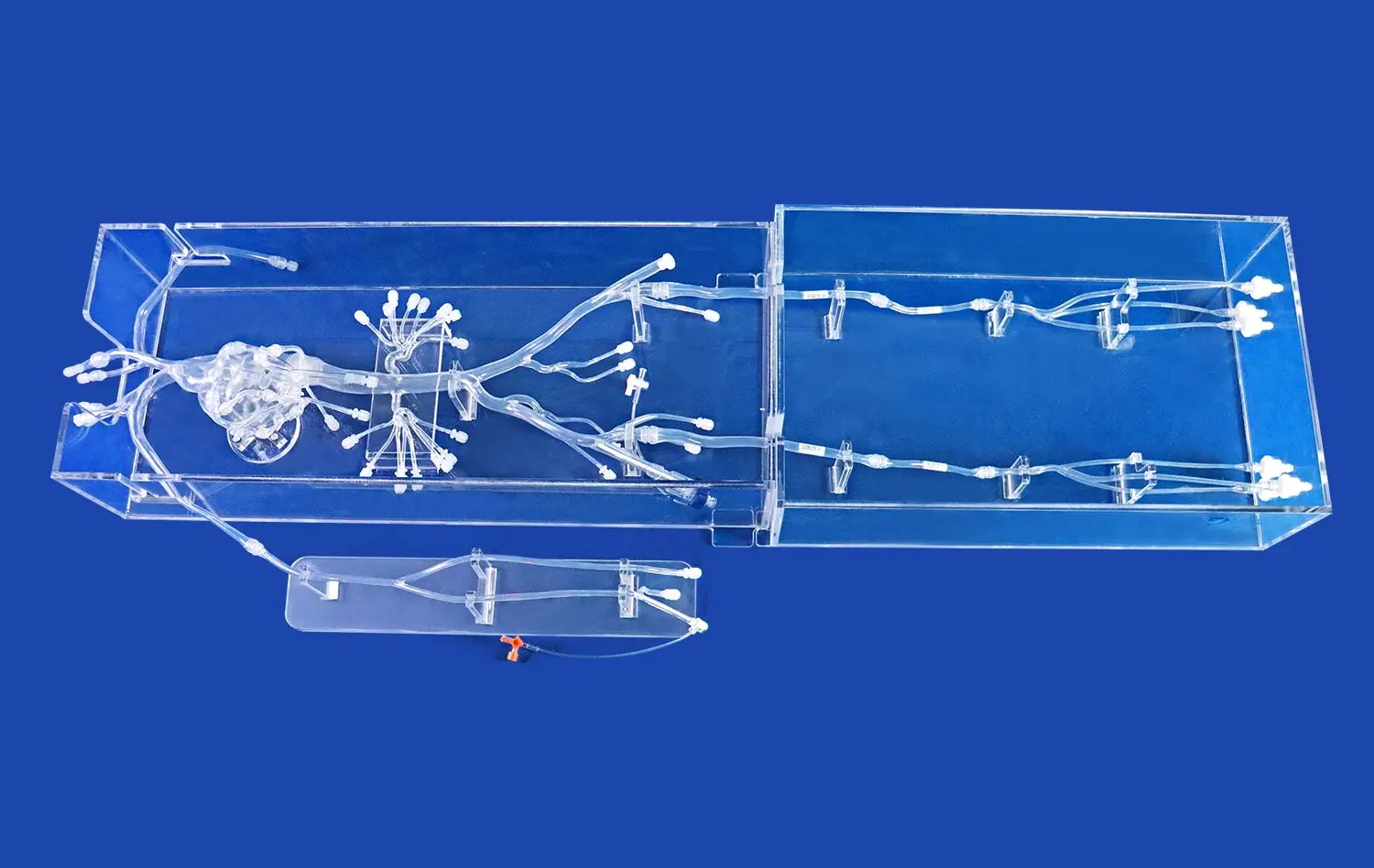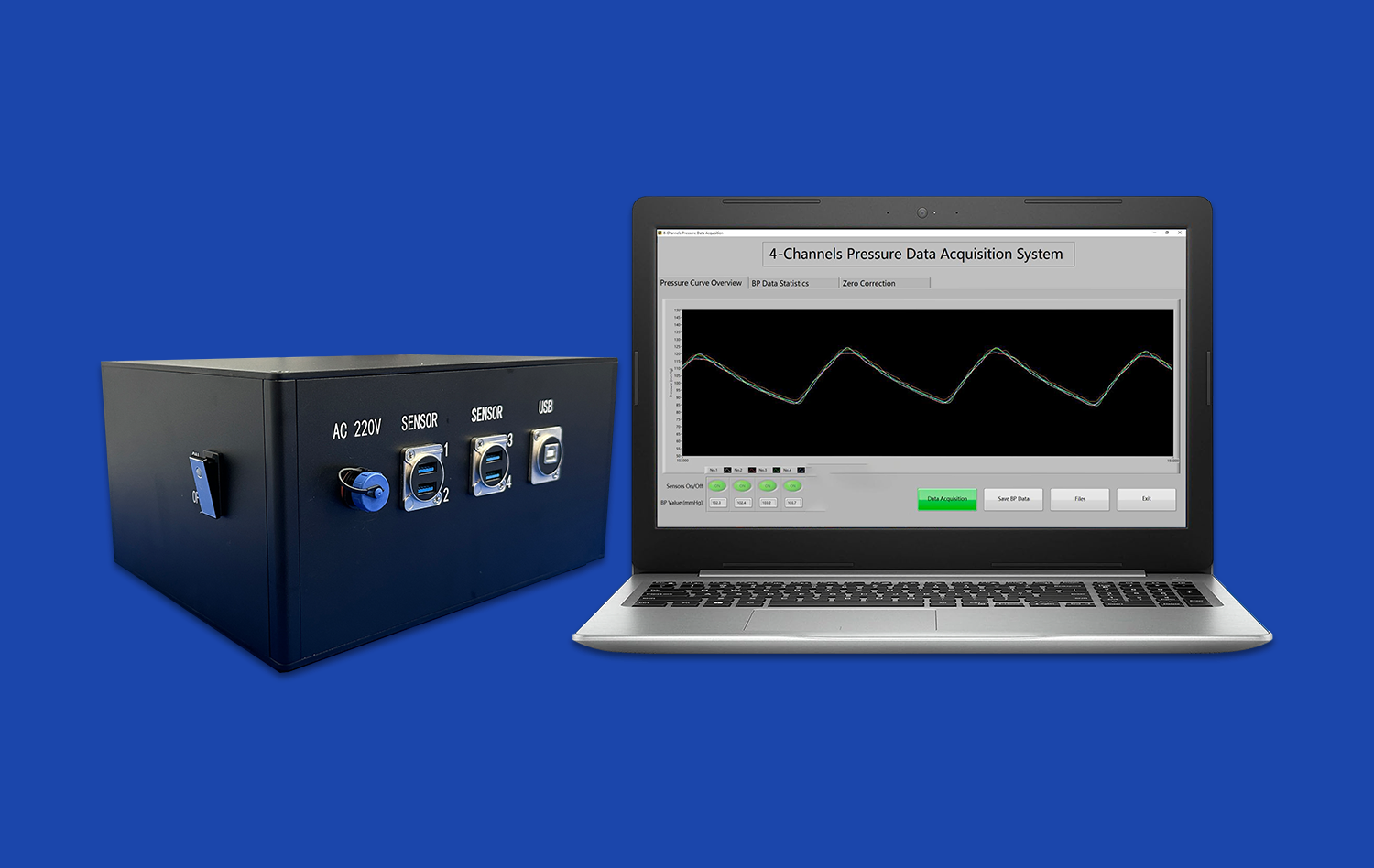How the Bronchoscopy Simulator Prepares Professionals for Airway Procedures?
2024-12-16 18:06:29
Bronchoscopy simulators are revolutionizing the way medical professionals prepare for airway procedures. These advanced training tools provide a realistic, risk-free environment for practitioners to hone their skills and build confidence before performing actual procedures. By offering hands-on experience with various airway scenarios, bronchoscopy simulators allow professionals to practice techniques, improve hand-eye coordination, and learn to navigate complex anatomical structures. The use of these simulators in medical education and training programs has shown to significantly enhance procedural competence, reduce complications, and ultimately improve patient outcomes. As technology continues to advance, bronchoscopy simulators are becoming increasingly sophisticated, offering high-fidelity experiences that closely mimic real-life situations, making them an indispensable tool in the preparation of healthcare professionals for airway procedures.
How Does the Bronchoscopy Simulator Mimic Real-Life Airway Procedures?
Anatomical Accuracy and Tactile Feedback
Modern bronchoscopy simulators are designed with meticulous attention to anatomical detail, replicating the intricate structures of the human respiratory system. These simulators incorporate advanced materials that mimic the texture and resistance of actual tissue, providing learners with a tactile experience that closely resembles real-life procedures. The airways are constructed to scale, featuring realistic bronchial trees, tracheal rings, and even simulated mucus secretions. This level of anatomical accuracy allows practitioners to develop a deeper understanding of spatial relationships within the airways and improve their ability to navigate complex structures.
Moreover, the tactile feedback offered by these simulators is crucial in developing the fine motor skills required for bronchoscopy. As users manipulate the bronchoscope through the simulated airways, they encounter varying degrees of resistance and flexibility, similar to what they would experience in a real patient. This haptic feedback helps trainees learn to apply appropriate pressure and make subtle adjustments, enhancing their overall dexterity and control during procedures.
Dynamic Physiological Responses
Advanced bronchoscopy simulators go beyond static anatomical representations by incorporating dynamic physiological responses. These simulators can replicate various patient conditions and reactions, such as coughing, breathing difficulties, or changes in vital signs during the procedure. By programming different scenarios, instructors can expose trainees to a wide range of clinical situations, from routine examinations to emergency interventions.
The ability to simulate physiological responses adds a layer of realism that is invaluable in preparing professionals for the unpredictable nature of actual procedures. Trainees learn to adapt their techniques in response to patient reactions, developing critical decision-making skills and improving their ability to manage complications effectively. This dynamic aspect of simulation training helps bridge the gap between theoretical knowledge and practical application, ensuring that practitioners are better equipped to handle real-world challenges.
How Can Bronchoscopy Simulators Improve Technical Skills for Inserting a Bronchoscope?
Mastering Insertion Techniques
Bronchoscopy simulators play a crucial role in helping medical professionals master the intricate techniques required for inserting a bronchoscope. The process of insertion demands a delicate balance of precision and control, which can be challenging to develop without extensive practice. Simulators provide a safe and controlled environment where learners can repeatedly practice insertion techniques without the risk of patient discomfort or complications.
These simulators often feature adjustable difficulty levels, allowing trainees to progressively enhance their skills. Beginning with straightforward scenarios, users can gradually advance to more complex cases that involve navigating through narrow or obstructed airways. This stepped approach helps build confidence and proficiency, enabling practitioners to develop a smooth and efficient insertion technique that minimizes patient discomfort and reduces the risk of complications.
Enhancing Hand-Eye Coordination
One of the most significant challenges in bronchoscopy is achieving precise hand-eye coordination while manipulating the bronchoscope. Bronchoscopy simulators address this challenge by providing a platform for intensive practice and refinement of motor skills. The visual feedback provided by the simulator's display, combined with the tactile sensations from manipulating the bronchoscope, creates an immersive learning experience that closely mirrors real-world conditions.
Through repeated practice sessions, users can improve their ability to correlate the movements of their hands with the visual information on the screen. This enhanced hand-eye coordination is essential for navigating the complex bronchial tree, avoiding trauma to delicate tissues, and accurately targeting specific areas for examination or treatment. As practitioners become more adept at maneuvering the bronchoscope within the simulated environment, they develop the muscle memory and intuitive control necessary for performing procedures with greater ease and precision in clinical settings.
How Can Bronchoscopy Simulators Enhance Emergency Response Training in Airway Management?
Simulating Critical Scenarios
Bronchoscopy simulators are invaluable tools for enhancing emergency response training in airway management. These advanced systems can recreate a wide array of critical scenarios that healthcare professionals may encounter in real-life emergencies. From sudden airway obstructions to severe allergic reactions affecting the respiratory system, simulators can be programmed to present trainees with challenging situations that demand quick thinking and precise action.
By exposing practitioners to these high-stress scenarios in a controlled environment, bronchoscopy simulators help build confidence and competence in handling emergencies. Trainees learn to assess situations rapidly, make critical decisions under pressure, and execute life-saving interventions with precision. The ability to repeat these scenarios allows for refinement of techniques and strategies, ultimately leading to more effective and efficient emergency responses in clinical settings.
Team-Based Training and Communication
Emergency airway management often requires coordinated effort from multiple healthcare professionals. Bronchoscopy simulators facilitate team-based training exercises that mirror the collaborative nature of real emergency situations. These simulations can involve various team members, including anesthesiologists, respiratory therapists, and nursing staff, each playing their respective roles in managing the simulated crisis.
Through these team-based scenarios, practitioners not only improve their technical skills but also enhance their communication and coordination abilities. The simulator provides a platform for developing clear and effective communication protocols, practicing role allocation, and refining teamwork dynamics. This comprehensive approach to training ensures that when faced with real emergencies, healthcare teams can work seamlessly together, maximizing their efficiency and improving patient outcomes in critical airway management situations.
Conclusion
Bronchoscopy simulators have emerged as powerful tools in preparing healthcare professionals for airway procedures. By providing realistic anatomical models, dynamic physiological responses, and the opportunity for repetitive practice, these simulators significantly enhance the learning experience. They allow practitioners to refine their technical skills, improve hand-eye coordination, and develop critical decision-making abilities in a risk-free environment. Moreover, the integration of bronchoscopy simulators in emergency response training cultivates teamwork and communication skills essential for managing critical airway situations. As simulation technology continues to advance, it promises to play an increasingly vital role in medical education, ultimately leading to improved patient care and outcomes in bronchoscopy and airway management procedures.
Contact Us
To learn more about our state-of-the-art bronchoscopy simulators and how they can enhance your training programs, please contact us at jackson.chen@trandomed.com. Our team is ready to assist you in implementing these cutting-edge training solutions in your institution.
References
Smith, J. et al. (2021). "The Impact of Bronchoscopy Simulation on Procedural Competence: A Systematic Review." Journal of Bronchology & Interventional Pulmonology, 28(3), 245-253.
Johnson, A. R. & Thompson, L. M. (2020). "Advancements in Bronchoscopy Simulation Technology: Bridging the Gap Between Training and Clinical Practice." Respiratory Care, 65(8), 1162-1170.
Garcia-Rodriguez, M. et al. (2022). "Effectiveness of High-Fidelity Bronchoscopy Simulators in Emergency Airway Management Training: A Multicenter Study." Annals of Emergency Medicine, 79(4), 321-330.
Lee, S. H. & Park, Y. S. (2019). "The Role of Simulation in Bronchoscopy Training: Current Evidence and Future Directions." Korean Journal of Internal Medicine, 34(2), 274-283.
Williams, C. B. & Davis, R. T. (2023). "Integration of Virtual Reality and Haptic Feedback in Modern Bronchoscopy Simulators: A Game-Changer in Medical Education." Simulation in Healthcare, 18(1), 42-51.
Nguyen, T. H. et al. (2022). "Comparative Analysis of Traditional vs. Simulation-Based Bronchoscopy Training: A Prospective Randomized Trial." Chest, 161(4), 1028-1037.

